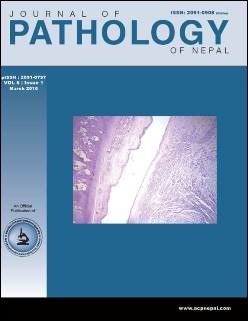Histopathological evaluation of ulcerative colitis in colonoscopic biopsies
DOI:
https://doi.org/10.3126/jpn.v6i11.15676Keywords:
Cryptitis, Backwash ileitis, Basal plasmacytosis, Inlammatory Bowel DiseaseAbstract
Background: Histopathologic evaluation of colonoscopic mucosal biopsy remains one of the earliest modalities of investigation in patients clinically suspected of ulcerative colitis. Pathologists should be aware of classical histomorphological features to avoid misdiagnosis. The aim of the present study was to evaluate histopathologic features as well as to determine possible atypical presentation.
Materials and Methods: Forty newly diagnosed cases of ulcerative colitis were included in the study. Colonoscopic biopsies taken from rectum as well as various areas of colon and ileum depending upon clinical extent of involvement were submitted for histopathological evaluation. Diagnosis of ulcerative colitis was made by correlating clinical, endoscopic and histopathologic findings.
Results: Out of 47 cases suspected of ulcerative colitis, histopathologic features were consistent with Ulcerative colitis in 40 cases. Almost all cases (97.5%) showed diffuse active colitis. Cryptitis (100%), crypt abscesses (75%) and basal plasmacytosis (85%) along with crypt architectural abnormalities (75%) and goblet cell depletion (70%) were classical histological changes associated with ulcerative colitis in active phase. Atypical presentations noticed were focal active colitis (2.5%), backwash ileitis (2.5%), rectal sparing (2.5%) and skip areas (5%).
Conclusion: Accurate diagnosis of ulcerative colitis requires elaborate knowledge of histopathologic features along with awareness of possible atypical presentation.
Downloads
Downloads
Published
How to Cite
Issue
Section
License
This license enables reusers to distribute, remix, adapt, and build upon the material in any medium or format, so long as attribution is given to the creator. The license allows for commercial use.




